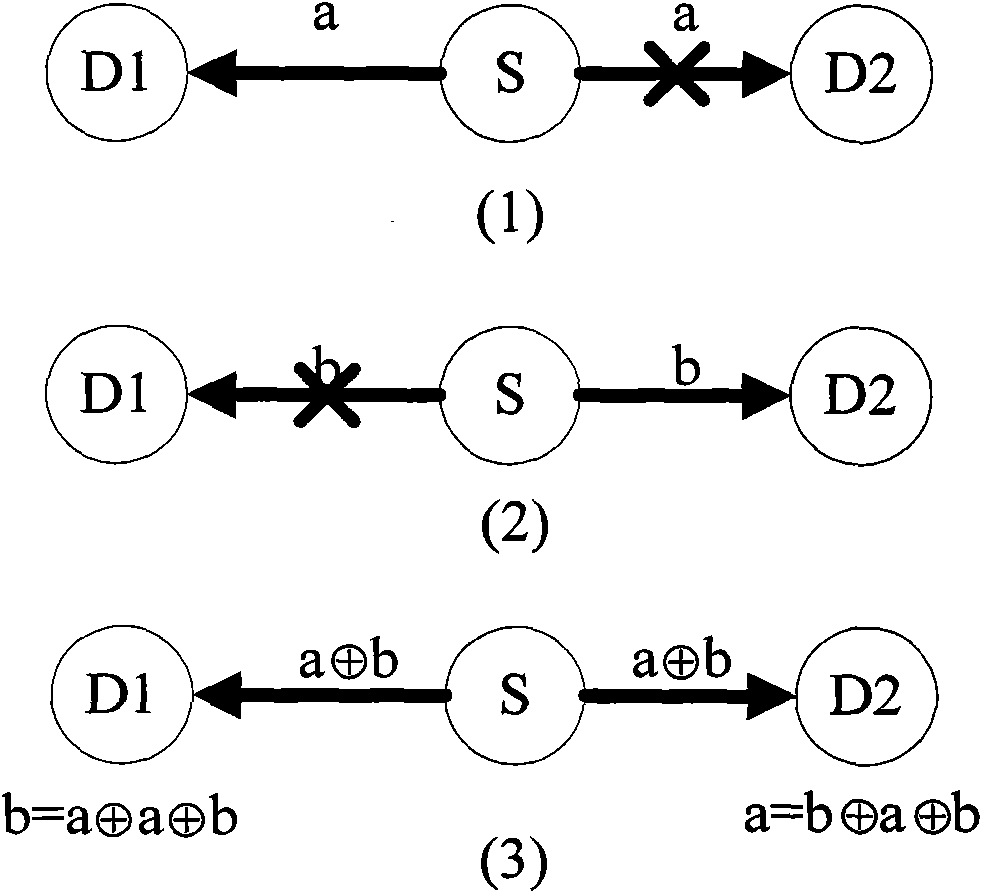Collaborative transmission method for wireless broadcasting multicast service
A technology for broadcast and multicast services and coordinated transmission, which is applied in the field of coordinated transmission of wireless broadcast and multicast services, and can solve the problems of throughput and spectral efficiency limitations, costing large resources, etc., so as to improve spectral efficiency and throughput and save overhead. , the effect of reducing the number of
- Summary
- Abstract
- Description
- Claims
- Application Information
AI Technical Summary
Problems solved by technology
Method used
Image
Examples
Embodiment 1
[0094] Figure 5 It is a flow chart of Embodiment 1 of the method for coordinated transmission of wireless broadcast multicast services according to the present invention, and this embodiment is based on a cellular wireless communication system. In this embodiment, both the information source and the control node are base stations, and all resource allocation, physical and media access layer (MAC) signaling are all controlled by the base station, and the specific steps are:
[0095] Step 101: the base station judges whether the current time slot is an uplink time slot or a downlink time slot, if it is a downlink time slot, then enter step 102, otherwise, enter step 105;
[0096] Step 102: The base station judges whether all the cluster users in the last downlink time slot feedback are NACK: if yes, the base station retransmits the data packet sent in the last downlink time slot, and enters step 104; otherwise, if there is at least one cluster user If the feedback is ACK, ente...
Embodiment 2
[0108] This embodiment is based on a cellular radio communication system. In this embodiment, the information source is a base station, and the control node is a cluster head. The base station can allocate fixed time-frequency resources to the cluster during the cluster establishment process. The retransmission scheduling in the cluster is controlled by the CH. For the base station, the processing process is similar to that of unicast, and the base station may not know the existence of other members in the cluster. Therefore, the broadcast of the base station and the retransmission in the cluster can be regarded as two processes, and the broadcast of the base station is independent of the retransmission process in the cluster. Figure 7a It is a flow chart of base station broadcasting in the coordinated transmission method for wireless broadcast multicast services described in Embodiment 2 of the present invention. see Figure 7a , the specific steps of the base station bro...
Embodiment 3
[0123] Figure 8 It is a flow chart of the coordinated transmission method of the wireless broadcast multicast service described in Embodiment 3 of the present invention. This embodiment is based on a distributed wireless communication network, such as a wireless ad hoc network. In this embodiment, the information source is the distributed Other nodes outside the cluster in the wireless communication network, such as wireless access points, the control node is the cluster head. Described method specifically comprises:
[0124] Step 301: the source sends a broadcast request to the CH, the CH sends a start (START) signaling to the source, and the source broadcast starts;
[0125] Step 302: the information source judges whether there are new broadcast and multicast service data packets to be sent, if so, the information source broadcasts a new data packet p, and enters step 303; otherwise, the information source broadcasts SBME, and enters step 307;
[0126] Step 303: cluster u...
PUM
 Login to View More
Login to View More Abstract
Description
Claims
Application Information
 Login to View More
Login to View More - R&D
- Intellectual Property
- Life Sciences
- Materials
- Tech Scout
- Unparalleled Data Quality
- Higher Quality Content
- 60% Fewer Hallucinations
Browse by: Latest US Patents, China's latest patents, Technical Efficacy Thesaurus, Application Domain, Technology Topic, Popular Technical Reports.
© 2025 PatSnap. All rights reserved.Legal|Privacy policy|Modern Slavery Act Transparency Statement|Sitemap|About US| Contact US: help@patsnap.com



